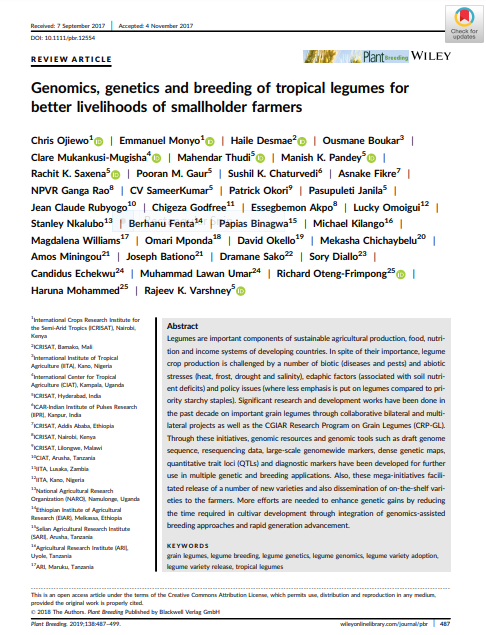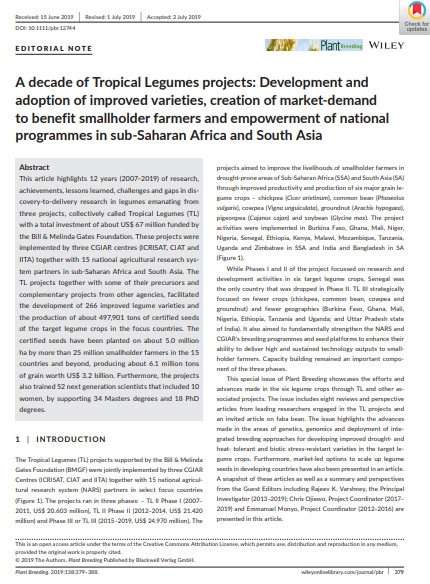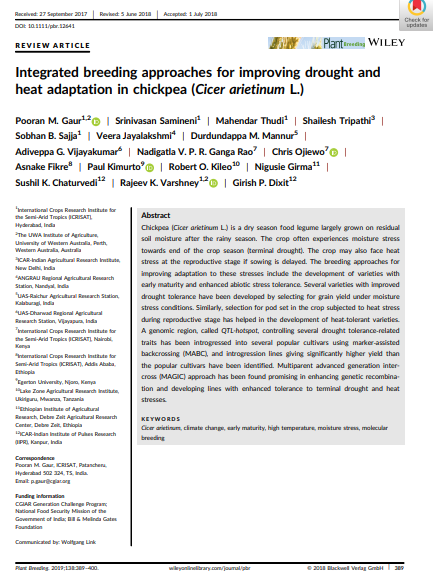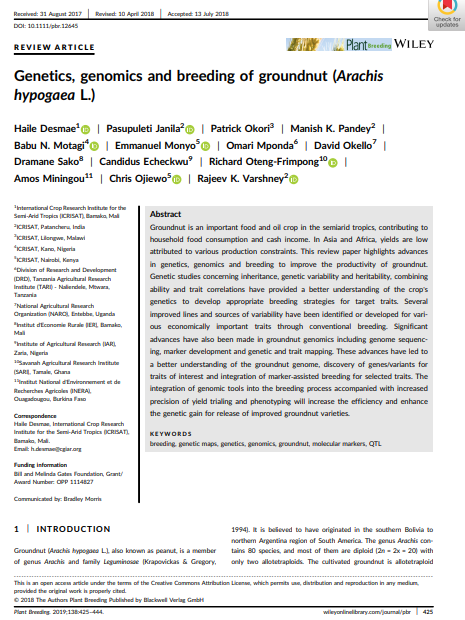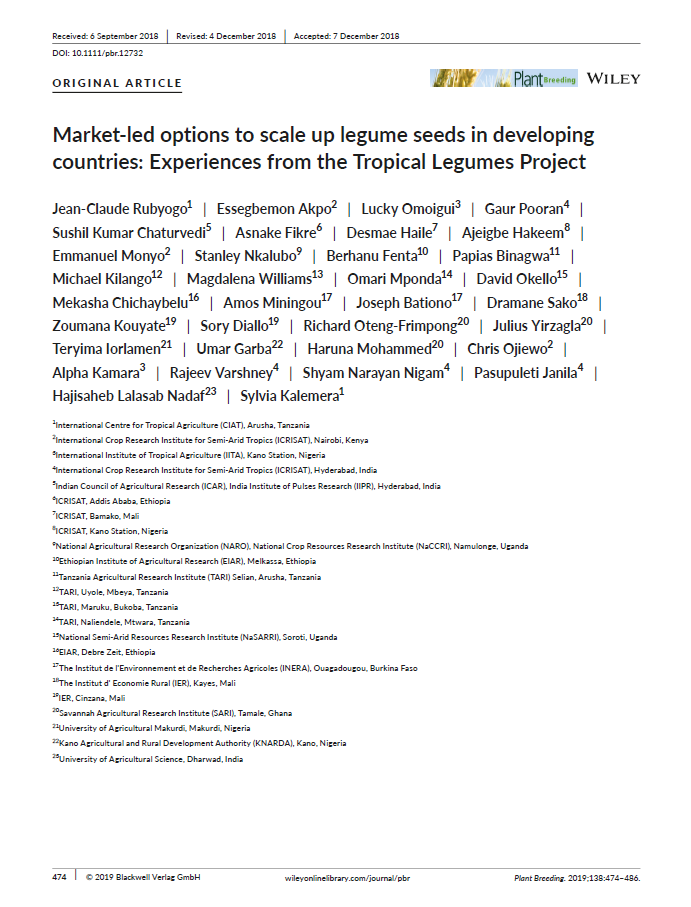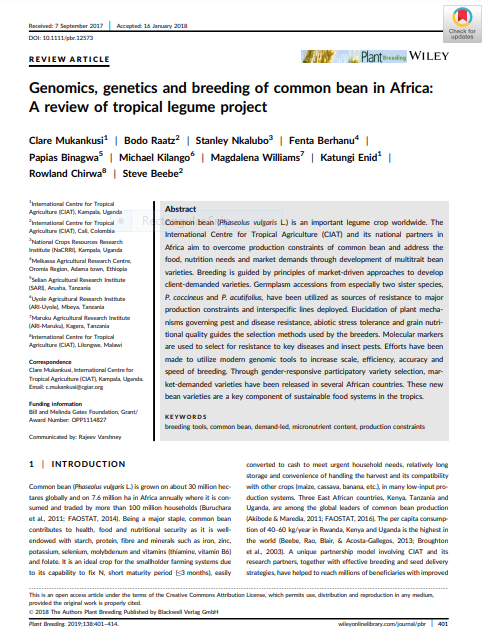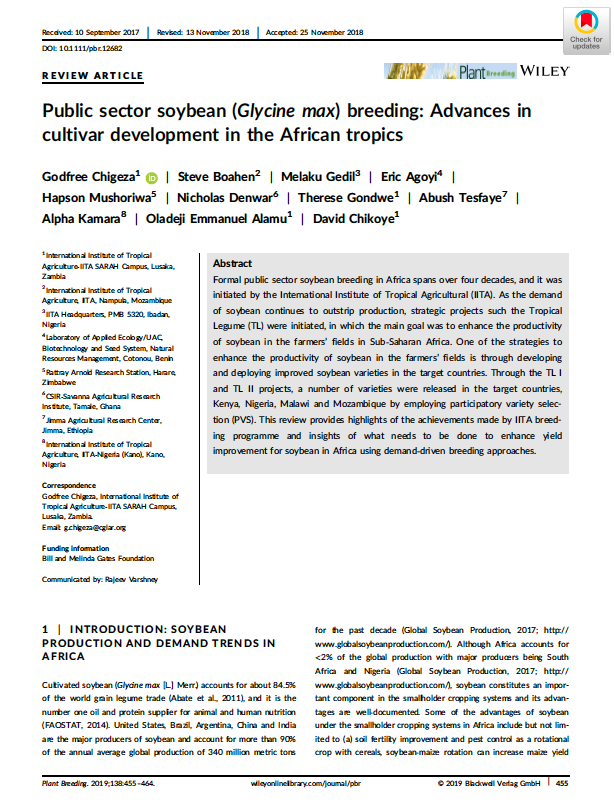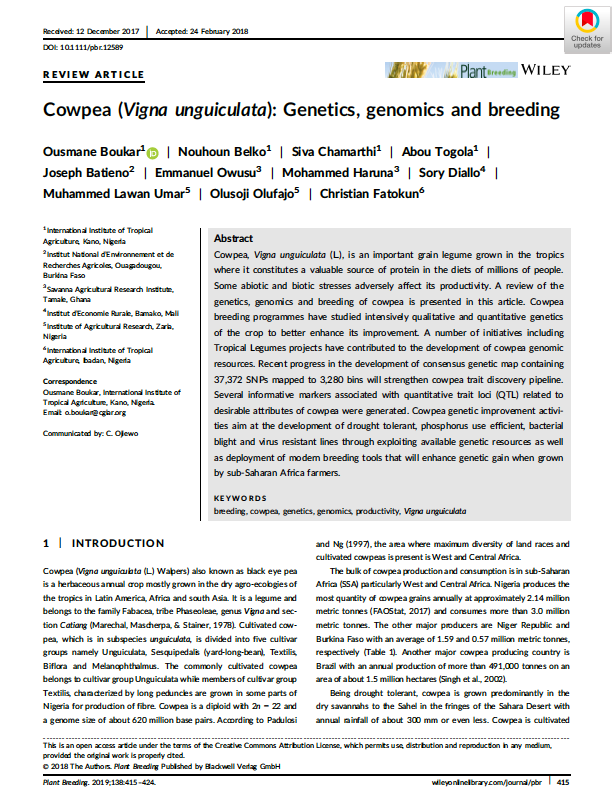Genomics, genetics and breeding of tropical legumes for better livelihoods of smallholder farmers
Summary
Legumes are important components of sustainable agricultural production and the food, nutrition, and income systems of developing countries. In spite of their importance, legume crop production is challenged by a number of biotic (diseases and pests) and abiotic stresses (heat, frost, drought, and salinity), edaphic factors (associated with soil nutrient deficits), and policy issues (where less emphasis is put on legumes compared to priority starchy staples). Significant research and development work has been done in the past decade on important grain legumes through collaborative bilateral and multilateral projects as well as the CGIAR Research Program on Grain Legumes (CRP‐GL). Through these initiatives, genomic resources and genomic tools such as draft genome sequence, resequencing data, large‐scale genome-wide markers, dense genetic maps, quantitative trait loci (QTLs), and diagnostic markers have been developed for further use in multiple genetic and breeding applications. Also, these mega-initiatives have facilitated the release of a number of new varieties and also dissemination of on-the-shelf varieties to farmers. More efforts are needed to enhance genetic gains by reducing the time required in cultivar development through integration of genomics-assisted breeding approaches and rapid generation advancement.
Open resource Download resource Access resource on external site